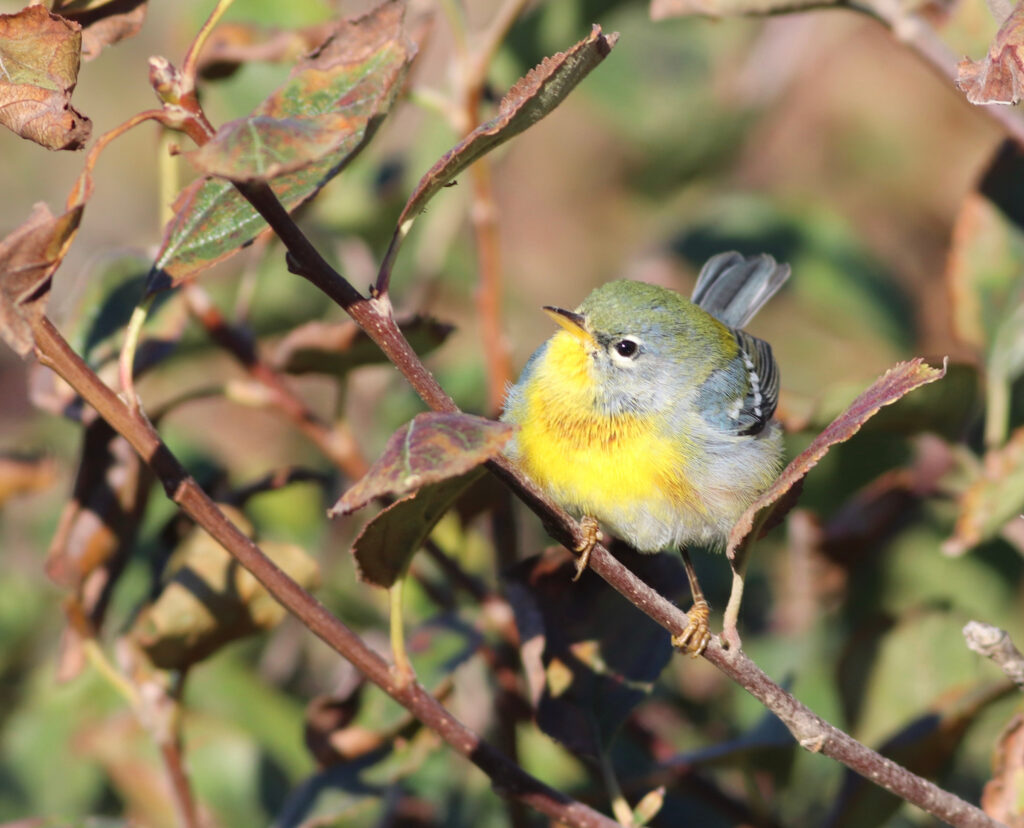
The Northern Parula has a peculiar name for a warbler, and an even more peculiar story. Many warblers, including the Northern Parula, are referred to as parulas and parulines in Spanish and French, respectively. Parula derives from the Latin parus, for Eurasian tit species (similar to our chickadees and titmice), and highlights the similarities between warblers (family Parulidae) and tits (family Paridae), which often forage for insects in similar areas of trees and shrubs. Northern Parulas are no different, preferring to forage among the tips of branches in the middle to upper canopy for caterpillars, spiders, and a variety of other arthropods.
Two of this warbler’s common names, chipe azul olivo norteño and paruline à collier, again in Spanish and French, respectively, refer to the Northern Parula’s appearance; the Spanish name translates to “Blue-Olive Northern Warbler”, and the French to “Collared (or Necklaced) Warbler.” They are generally blue-gray above with an olive green back patch, and a distinctive reddish collar on adult birds.
The “Northern” part of these names is also quite literal: they are widely distributed throughout eastern North America, overwintering across the Caribbean, from the Yucatan peninsula to the Bahamas, and breeding in mature forest, near water, from Texas west to Florida, and north to Quebec and Ontario.
There is a conspicuous swath where they do not breed, in southern New England and surrounding the Great Lakes. This is due to their dependence on epiphytic plants and lichens for nesting material: they utilize abundant Spanish Moss in the south, and Usnea lichens (Old Man’s Beard) in the north. The latter was extirpated from this conspicuous swath due to industrial air pollutants during the 19th and 20th centuries, and Northern Parulas stopped nesting there as a result. If you’ve got a Northern Parula nesting in your backyard this summer, you can thank decades of environmental legislation that have removed many pollutants from the air we all breathe.
Backyard Bird of the Month is a feature by Maine Audubon created for the Maine Home Garden News, the newsletter of the University of Maine Cooperative Extension: Garden and Yard
Photo: Nick Lund
